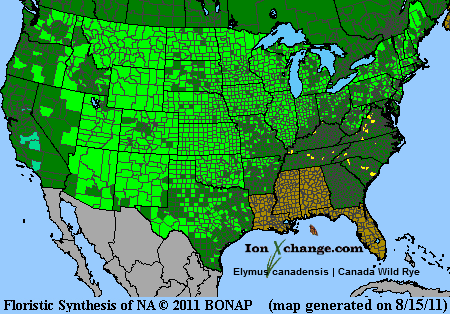 Loading... Please wait...
Loading... Please wait...- Home
- SEEDS
- SEED MIXES
- BUY PLANTS
- Info Request
-
Educational Videos
- Greenhouse Transplanting Demonstration
- Native Seed Cleaning demonstration at Ion Exchange Native Seed and Plant Nursery
- Attracting Butterflies
- Bidens - Bidens cernua Harvest Video
- Big Blue Stem Harvest
- Butterfly Milkweed Video
- Button Blazingstar - Liatris aspera Video
- Buttonbush - Cephalanthus occidentalis Video
- Canada Anemone - Anemone canadensis Harvest Video
- Cardinal Flower - Lobelia cardinalis Video
- Control Burn - Wildflower Field
- Cream Gentian - Gentiana flavida
- Culver's Root - Veronicastrum virginicum Video
- Cup Plant - Silphium perfoliatum Video
- Dormant Seeding | Planting
- Earthyman's Favorite Wildflowers Video
- Eco-Friendly Golf Course Seed Mix
- Floating Islands
- Fringed Loosestrife - Lysimachia ciliata Video
- Giant Yellow Hyssop - Agastache nepetoides Video
- Indiangrass - Sorghastrum nutans Video
- Iowa Prairie Partner Program
- Leadplant - Amorpha canescens (Potted) Video
- Meadow Blazingstar - Liatris ligulistylis
- Midland Shooting Stars - Dodecatheon meadii Video
- Native Plant Nursery Field Irrigation Experiment
- Nodding Onion - Allium cernuum Video
- Ohio spiderwort - Tradescantia ohiensis Video
- Old Man's Beard - Clematis virginiana blooms Video
- Oxeye Sunflower - Heliopsis helianthoides Video
- Prairie Spiderwort - Tradescantia bracteata
- Purple Coneflower - Echinacea purpurea Video
- Rain Garden or Water Garden Video
- Rattlesnake Master - Eryngium yuccifolium Video
- Riverbank Stabilization - Wetland Plants
- Rose Mallow - Hibiscus militaris Video
- Rosinweed - Silphium integrifolium Video
- Royal Catchfly - Silene regia
- Showy Tick Trefoil - Desmodium canadense Video
- Sneezeweed - Helenium autumnale Video
- Swamp Betony - Pedicularis lanceolata Video
- Swamp Milkweed - Asclepias incarnata Video
- Sweet Blackeyed Susan - Rudbeckia subtomentosa Video
- Tall Coreopsis - Coreopsis tripteris Video
- Urban Butterfly Garden
- Wild Bergamot - Monarda fistulosa Video
- Wild Geranium - Geranium maculatum Harvest
- Wild Goldenglow - Rudbeckia lanciniata Video
- Wild Petunia - Ruellia humilis Harvest Video
- Woodland Knotweed - Polygonum virginianum Video
- Yellow Coneflower - Ratibida pinnata Video
- Blog
- Resources
- Policies
Contact Us
Phone:
563-419-0837
or 563-535-7231
Email:
hbright@ionXchange.com
Browse Products
Add to Wish List
You Recently Viewed...
Our Newsletter
Product Description
During the late spring and summer, this native perennial grass is tufted at the base, producing unbranched culms about 3-5' tall. Each culm has about 8 alternate leaves that are distributed throughout its length; the lower leaves often become withered before commencement of the blooming period. From fall to spring, this grass produces clumps of low basal leaves up to 1' tall that are semi-evergreen. Each culm is light green, terete, and slightly glaucous; it is mostly hidden by the sheaths. The blades of the alternate leaves are up to 13" long and 2/3" (15 mm.) across; they are ascending to spreading, hairless, and widest toward the middle. The upper surface of each blade is green, while the lower surface is blue and glaucous. The sheaths of the alternate leaves are mostly blue and glaucous, although the lower sheaths may be somewhat green; they are hairless, open, and longer than than the internodal areas of the culm. Each ligule consists of a stiff short membrane that soon turns brown. The nodes of the culm are slightly swollen.
| Sun Exposure | Prairie, Savanna |
| Soil Moisture | Wet Mesic, Mesic, Dry Mesic, Dry |
| Bloom Time |
|
| Bloom Color | |
| Max Height | 5 feet |
| Wetland Code | FAC- |
| Germ Code | A |
| Seeds Per Ounce | 5,200 |
" The preference is full to partial sun and moist to dry conditions. This grass will adapt to practically any kind of soil, including those containing loam, clay, gravel, or sand. This robust grass readily reseeds itself and can be aggressive in some situations. If the seeds are planted during the spring, it can develop culms with flowering spikes during the summer or fall of the same year.
(PLS) Canada Wild Rye (Elymus Canadensis): During the late spring and summer, this native perennial grass is tufted at the base, producing unbranched culms about 3-5' tall. Each culm has about 8 alternate leaves that are distributed throughout its length; the lower leaves often become withered before commencement of the blooming period. From fall to spring, this grass produces clumps of low basal leaves up to 1' tall that are semi-evergreen. Each culm is light green, terete, and slightly glaucous; it is mostly hidden by the sheaths. The blades of the alternate leaves are up to 13" long and 2/3" (15 mm.) across; they are ascending to spreading, hairless, and widest toward the middle. The upper surface of each blade is green, while the lower surface is blue and glaucous. The sheaths of the alternate leaves are mostly blue and glaucous, although the lower sheaths may be somewhat green; they are hairless, open, and longer than than the internodal areas of the culm. Each ligule consists of a stiff short membrane that soon turns brown. The nodes of the culm are slightly swollen.
Edible Uses
Medicinal Uses: Unknown
Other Uses: "An easily grown plant, it succeeds in most soils, preferring a sandy soil and a sunny position. Plants can flower too late to ripen their seed in Britain, especially in the western half of the country.
Herbal Uses: Unknown












